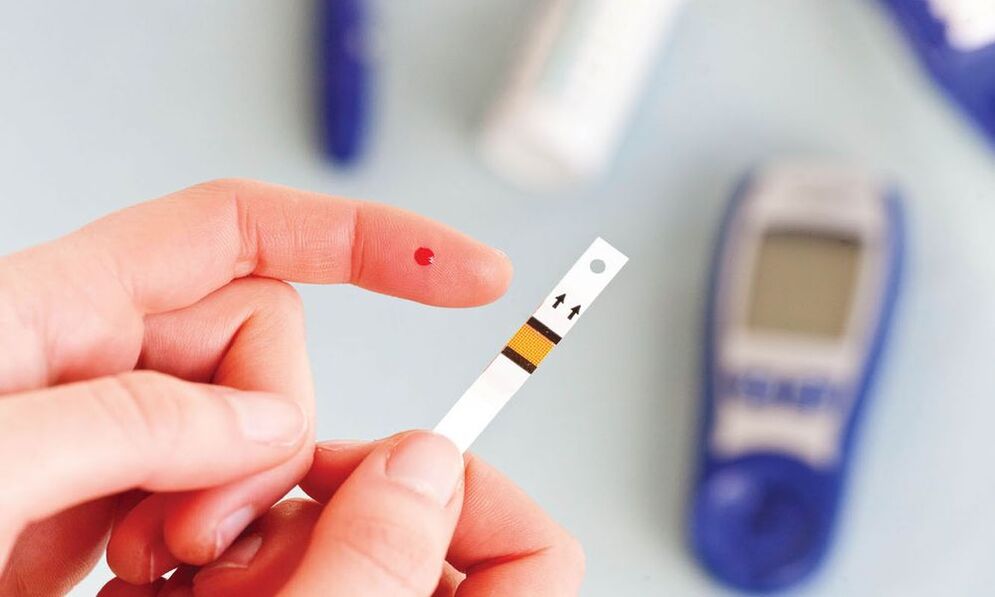
You can identify diabetes by noticing the symptoms that appear. This endocrine disorder can worsen health. At first, many patients do not even notice the first symptoms of diabetes, although Type I pathology can reduce the quality of human life within a few days. The later a disease is detected, the harder it will be to achieve its compensation. Keeping in mind the signs of diabetes will allow you to consult your doctor promptly if it occurs.
Disease characteristics
Diabetes is a serious endocrine disease in which there is an absolute or relative deficiency of insulin. In the first case, it is not produced in the required amount by pancreatic cells, and in the second, it disrupts the process by which this hormone interacts with target cells.
Insulin is necessary so that glucose entering the body can be absorbed by tissues. If the hormones are not able to perform their function, the sugar will circulate in the blood for a long time. As a result, tissues and organs cannot obtain the necessary energy.

The pathology is the development of persistent hyperglycemia. The sugar concentration has always been higher than the norm. In this disease, all types of metabolism are disturbed. The problem comes from carbohydrate, fat, water salt, protein and mineral metabolism.
Classification
Endocrinologists distinguish between the following types of diabetes:
- Insulin-dependent (type I);
- Insulin-independent (type II);
- pregnant.
Type I diabetes is insulin-dependent. This form of the disease is mostly found in children and young adults. The main symptoms of type I pathology are obvious. In this form of the disease, the body does not produce insulin, so the patient needs daily injections of the hormone.
In Form II, the first signs do not appear immediately, they are mild. A person may not suspect a health problem for several years after the onset of the disease. Insulin is produced in the body, but target cells are not sensitive to it.
Gestational diabetes occurs during pregnancy. After giving birth, the condition will return to normal, but women need to be careful and follow a diet. Patients with this form are at risk for type 2 disease.
first signs of diabetes
All symptoms of this endocrine pathology are divided into primary and secondary. Their appearance is characteristic of both diseases. But people who are insulin-dependent tend to experience major symptoms. They become apparent when no more than 20 percent of the cells responsible for producing insulin remain in the pancreas.
Key features include:
- polyuria - increased urination, increased urine output;
- Polydipsia - compulsive thirst that does not quench thirst, the patient can drink more than 5 liters of water per day;
- Eating more - increased hunger, not feeling full after meals;
- Weight loss - People lose weight rapidly as insulin dependence develops.
In the first form of the disease, patients can even roughly name the date they first felt sick.
But the main symptoms are also present in type II of the disease. Their severity gradually increases. As a result, the patient is often unable to tell when he first felt a change in well-being. Insulin-independent patients noticed milder symptoms earlier. But many of these can be confused with other diseases, so people don't immediately turn to an endocrinologist.

Secondary symptoms include:
- dry mouth;
- itching of the skin and mucous membranes;
- muscle weakness, increased fatigue;
- Skin lesions that are difficult to treat;
- visual impairment;
- persistent headache;
- a metallic taste in the mouth;
- Numbness in the limbs.
But major and minor signs develop in all forms of pathology. It is possible to know which disease a patient has without a comprehensive examination on a case-by-case basis. But for the specification of the diagnosis, the choice of the therapeutic diagnosis is mandatory.
Type 1 symptoms
People whose cells responsible for producing insulin are destroyed experience persistent hunger. They may lose weight as the amount of food absorbed increases. Noticing these changes, it is necessary to immediately donate blood for sugar.
Other symptoms of insulin dependence include:
- increase nerve excitability;
- unprovoked vomiting, nausea;
- Acetone smell when breathing;
- pain in the heart area;
- sleep disorder;
- severe headache.
Even the appearance of a symptom should not be ignored. You can tell if there is a problem by analyzing the amount of sugar in your blood. If insulin therapy is not started at the first sign, the patient's condition will deteriorate rapidly and he may fall into a diabetic coma.
Symptom Type 2
Specific changes that can be suspected of developing non-insulin-dependent disease include the following:
- pain in the extremities;
- muscle cramps in the legs, arms;
- weight gain;
- Decreased libido, potency problems;
- decreased pain sensitivity;
- weakened immune system;
- Xanthomas on the body - yellow formations that violate fat metabolism;
- Increases hair growth on the face while reducing the amount of hair on the legs.
But these manifestations of patients are often mild, so people do not pay attention. Many problems are discovered by chance during routine inspections.
Occurrence characteristics
There were no significant differences in disease development between men and women. It starts the same way in both sexes. They may differ only in minor symptoms.
The severity of pathological signs and the rate of disease progression are directly dependent on the age of the person. Children and adolescents are diagnosed with type 1 diabetes. People over the age of 40 can develop Type II disease.

Insulin-independent pathology is more commonly detected in the following patients:
- lead an inactive lifestyle;
- suffer from overweight;
- Eating large amounts of simple carbohydrates;
- Experiencing ongoing psycho-emotional stress.
You can distinguish the type of disease by the symptoms.
in children
Young people develop diabetes that is primarily insulin-dependent. This diagnosis applies to patients under the age of 30. A doctor must be consulted if a child or young adult urinates frequently and they drink significantly more fluids.
The following children are more likely to have the disease:
- have a genetic predisposition to diabetes;
- Birth weight 4. 5 kg;
- have metabolic disorders (obesity, hypothyroidism);
- Suffering from a viral infection that can damage pancreatic cells (rubella, measles, mumps, etc. ).
In children and adolescents with mild symptoms, symptoms do not always appear, they are almost invisible. Symptoms only appear as the disease progresses.
in men
In adult patients, there is a risk of developing type 2 pathology. Men are predisposed to diabetes, and when they gain weight, first their abdominal volume increases. With visceral obesity, the pressure on the internal organs increases and the work of the pancreas is disrupted.
Worrying symptoms are diminished libido and impotence. A characteristic symptom may be inflammation of the foreskin - it occurs due to increased urination. The development of this condition contributes to the active reproduction of pathogenic bacteria.
in women
One of the symptoms of diabetes is itching of the mucous membranes. More commonly, women are faced with it happening - they have unpleasant sensations in the genital area. Most of them turned to gynecologists on suspicion of having an infection transmitted through sexual contact. If, based on the test results, there are no STDs and no problems with the microbiome, then your doctor may recommend checking your blood sugar levels.
diagnosis
If you have symptoms of endocrine disorders, you need to be checked. Diabetes can be detected with certain tests:
- glucose concentration in the blood when fasting;
- Glycated hemoglobin - shows the patient's average blood sugar level over the past 2-3 months;
- Glucose Tolerance Test - Analysis performed on an empty stomach and repeated after taking glucose.
Your doctor may recommend donating blood at any time without prior preparation. This is necessary if there are signs of diabetic features.
which doctor to contact
Patients with severe, mild, or specific signs of diabetes should make an appointment with an endocrinologist. But a therapist can make an initial diagnosis - he will guide the necessary tests.
Based on the test results, an endocrinologist can make immediate recommendations for nutrition, lifestyle changes, and medication. For group 1 diseases, insulin injections are essential. People with type 2 diabetes are treated with a diet, a choice of drugs, and under the influence of these drugs, target cells begin to more actively absorb insulin and glucose.

























